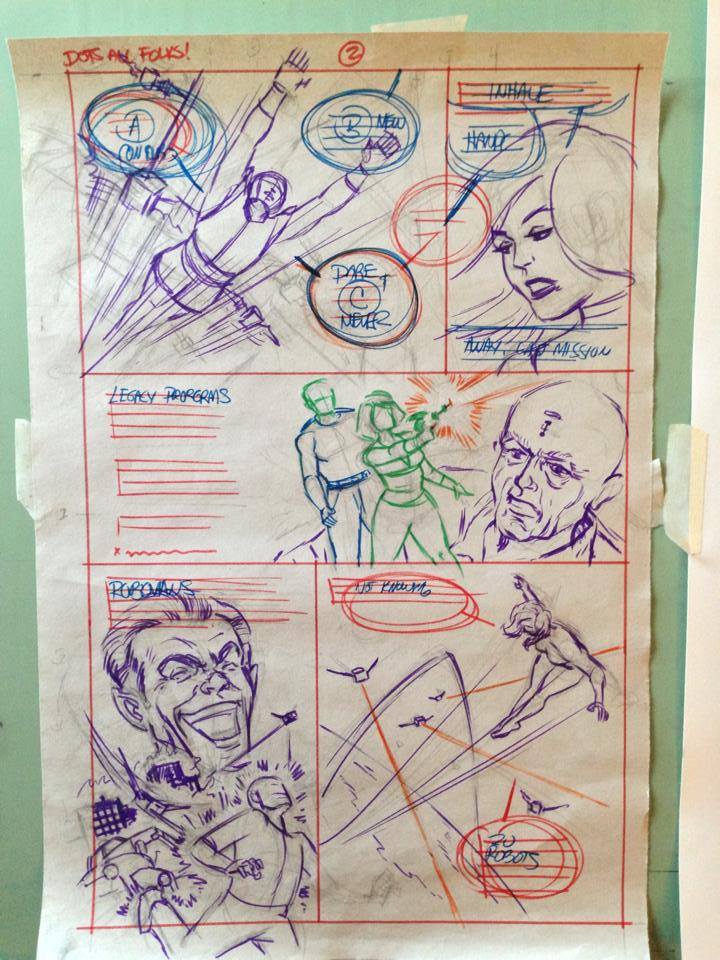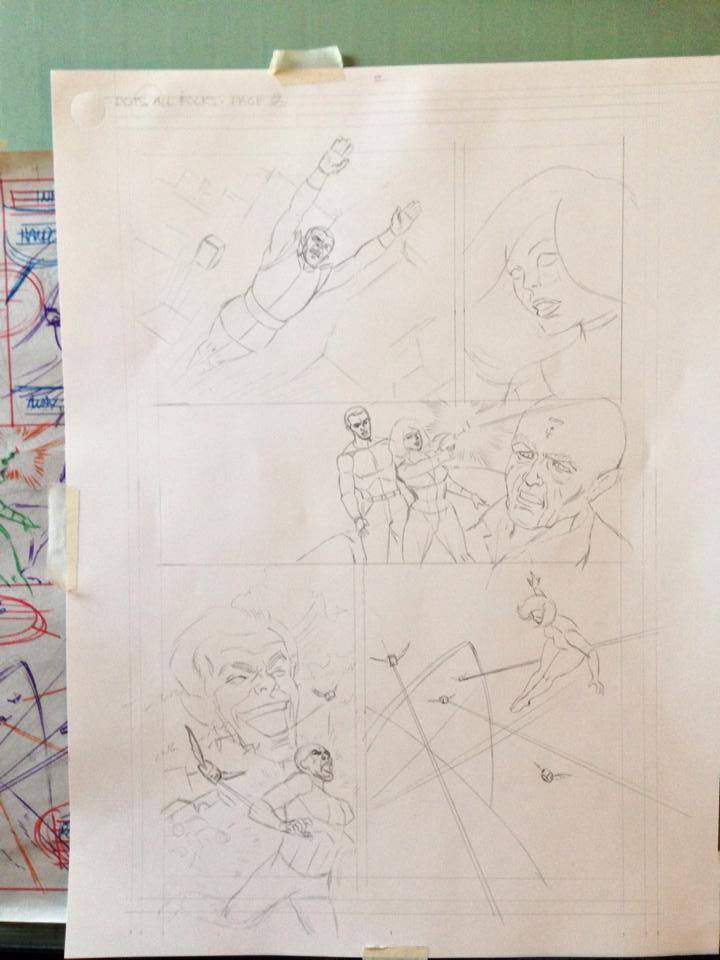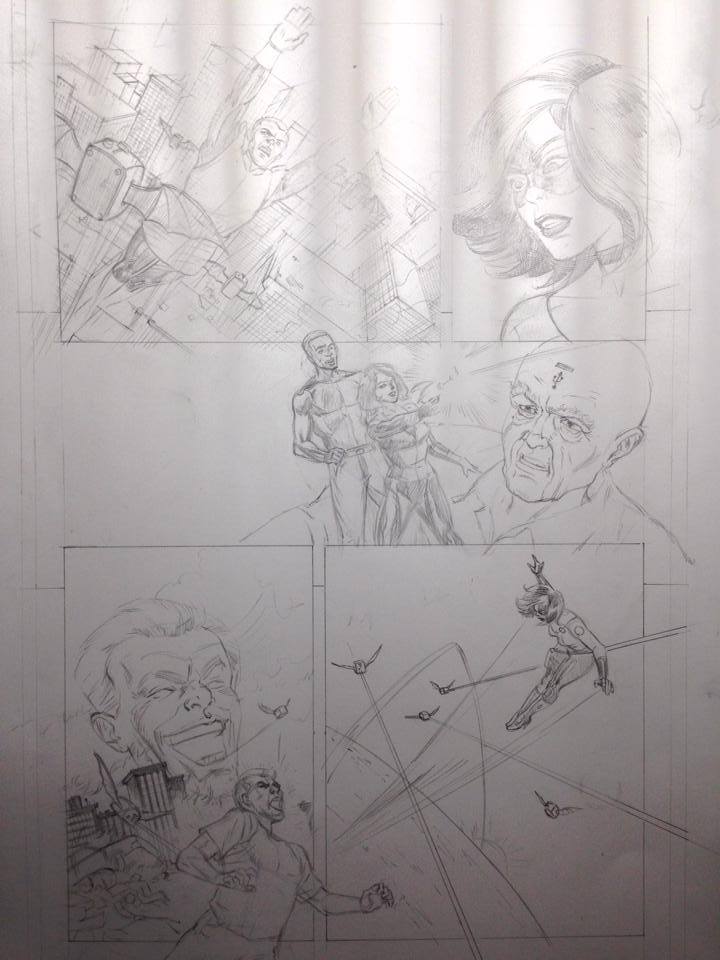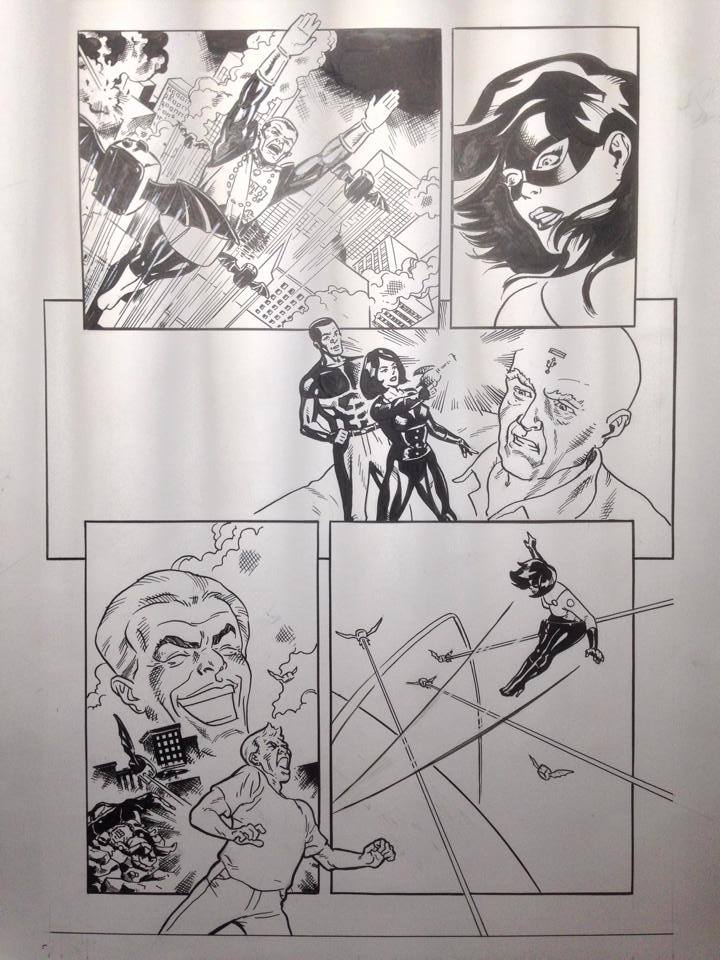The Problem
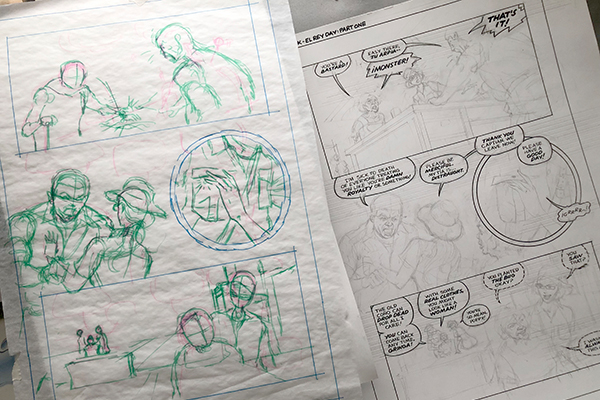
Pencilling comic book pages was always a messy process for me, involving tons of erasing and rework. Most of the indecision came seeing the page on large paper after eyeballing from thumbnails. New storytelling and drafting ideas created a paralysis. Since I processed each task in blocks (pencilling the entire story, then lettering, etc.), I sometimes forgot what lines to ink. Soft pencils got smudgy when stacked while waiting to be inked, and hard pencils were practically invisible.
John Buscema did live-size preliminary roughs with graphite on newsprint*, then used a light box to trace onto professional Bristol paper for inking (and at the time, lettering). That seemed too expensive and time-consuming to me back in the '80s.
There was also the problem of the finished art not looking fresh as my thumbnails. Neal Adams and Gil Kane solved this by tracing their thumbnails onto the inking paper with a Lucigraph. Massart had an Artograph DB300 in the '80s, but the line to use it was always too long. To this day, I'm still eyeballing and living with the comparatively stiff and occasionally disproportioned results.
My Solution
Fast forward to 2009, when I started drawing comics on paper after a 15-year layoff. This was my first attempt at Buscema's preliminary method. My cheap wooden light box wasn't strong enough to show graphite on newsprint clearly enough to trace. Switching to cheap magic markers worked much better! In addition to clarity, using different marker colors for borders, lettering, art, and notes made the tracing process far less error-prone.
I also upgraded my light box to a Artograph LightPad 930. It's just as heavy as my old one, but thinner and easier to use.
The Light Box Method in Action
A page from "Enter...General Zaq!", working with a full script. This story is lettered digitally.
Other stories I've created this way include "El Rey Day (Part I)" and "End of the Doctor (Part I)". Lots of professionals think this process is needlessly elaborate, but I still freeze up when experimenting on professional paper. Working things out on cheap newsprint helps me make cleaner pencil art. Your mileage may vary.
David Marshall, arting from the school they tore down to build the old school
*Buscema had the advantage of working "Marvel Style," where artists plotted the story without a script. Jack Kirby, Wally Wood, Steve Ditko, and others felt this was wage theft since they weren't paid or credited for co-writing, while others saw it as liberation from working with formal scripts. Buscema's "just outlines" were breakdowns for inkers to do finished art. Knocking out seven pages of breakdowns a day (two whole books a week) made him Marvel's highest-paid artist.
